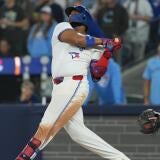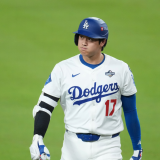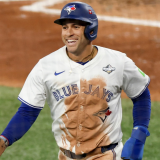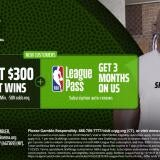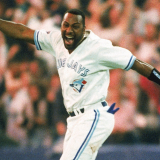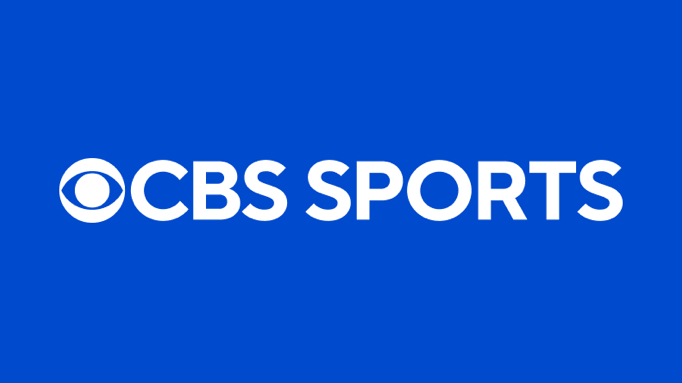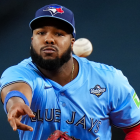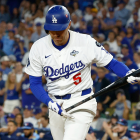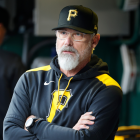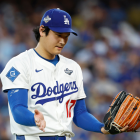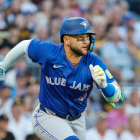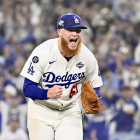
Inside the Mets' collapse: How Juan Soto and the $340 million club imploded all the way out of a playoff berth
The Mets held the best record in baseball on June 12. Now they're going home for the winter
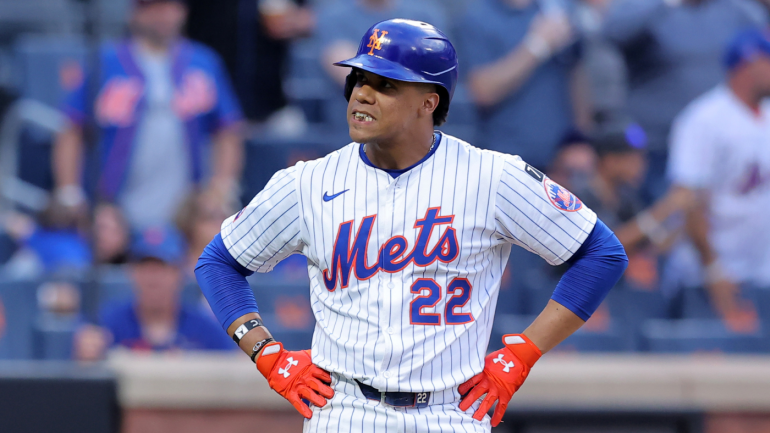
There is no sense in beating around the bush and calling it anything other than what it is: The New York Mets failing to make the postseason is a colossal failure. It's a failure by the players, first and foremost. It's a failure by the coaches, the front office, and also ownership too. No one should escape blame for a collapse like this, including the guy signing the checks.
"Pissed, sad, frustrated. You name it," manager Carlos Mendoza said after Sunday's season-ending loss to the Miami Marlins (MIA 4, NY 0).
You can almost pinpoint the exact moment New York's season fell off the rails. On June 12, Pete Alonso's flip to Kodai Senga covering first base was high, and Senga jumped for the ball and pulled his hamstring. He exited the game and missed a month, and was never quite the same after that.
The Mets hung on to beat the Washington Nationals that day and improved to an MLB-best 45-24. Senga's injury was unfortunate, but things were going as planned. The pitching was great, $765 million man Juan Soto was shaking off his slow start, and the Mets looked like the juggernaut they were supposed to be after last year's spirited run to the NLCS. All was well in Flushing.
One day later, the Mets lost the first game in what would become the first of three seven-game losing streaks the rest of the season. The Mets were an MLB-best 45-24 through June 12. They went 38-55 the rest of the way, the fifth-worst record in baseball. That's 69 games of excellence and 93 games of being one of the worst teams in the league. The 2025 Mets were bad much longer than they were great.
What happened here? Why did the Mets fall so short of expectations? And how can they avoid this next season and contend? Let's dig into what happened to the 2025 Mets and how the 2026 Mets can fix it.
They ran out of pitching
The Mets finished ninth in runs scored per game and third with a team 114 OPS+. They went 10-15 in September and averaged 4.64 runs in those games. The offense was there. The pitching was not. The Mets allowed at least five runs in seven of their last 11 games. After July 26, they won one game while scoring fewer than five runs. One.
The Senga (hamstring), Griffin Canning (Achilles tear), and Tylor Megill (Tommy John surgery) injuries took away important depth at midseason, and Sean Manaea was never quite right after his spring training oblique injury. The Frankie Montas signing was a total dud. He had UCL surgery recently and the Mets will pay him $34 million from 2025-26 for 38 ⅔ innings of 6.28 ERA ball.
Clay Holmes and David Peterson, two rocks atop the rotation early in the season, regressed in the second half. Badly in Peterson's case.
| Holmes | Peterson | |
|---|---|---|
First half ERA | 3.31 | 3.06 |
Second half ERA | 3.98 | 6.43 |
First half WAR | 1.1 | 2.2 |
Second half WAR | 0.9 | 1.0 |
The Mets did not add a starter at the trade deadline, though, in their defense, very few quality starters were moved. Shane Bieber and Merrill Kelly were the only starters who changed teams that you could envision starting a postseason game. Or at least envision wanting to start them in a postseason game. A few others were moved who could be pressed into duty in October.
Anyway, the Mets did not add a starting pitcher at the trade deadline and instead turned to their farm system. Three rookies -- Nolan McLean, Brandon Sproat, Jonah Tong -- combined to start 12 of New York's final 20 games. McLean was terrific and was lined up to start Game 1 of the Wild Card Series had the Mets qualified. Sproat didn't move the needle. Tong was replacement level.
Cohen and POBO David Stearns splurged for Soto and then took small bites to round out the rotation. Converting Holmes back into the rotation was, ultimately, a win even though he wasn't really an impact starter. Betting on Manaea's lower arm slot -- his second reinvention in three years -- was sensible enough. It just didn't work out. Montas is a total loss, albeit one Cohen can afford to eat.
You can chalk a lot of the Mets' pitching problems up to "s--- happens." Senga's hamstring injury. Manaea's oblique injury. Megill's elbow injury. Canning's Achilles injury. Those were all unfortunate and significant injuries that subtracted meaningfully from the quality and quantity of the innings the Mets received from their starters. (Holmes seemingly wearing down was more predictable.)
This is baseball and s--- happens, but good teams overcome it and bad teams use it an excuse. The Los Angeles Dodgers, the team Cohen has said he wants to emulate, build their team with a "s--- happens and we must be ready" philosophy. The New York Yankees lost Soto, the ultimate s--- happens, and their Plan B produced the same record as last year and a better run differential.
Run prevention is not just pitching, of course. The Mets played comically poor defense down the stretch. They ranked 29th with a .684 defensive efficiency in September, meaning they turned only 68.4% of batted balls into outs. The Mets ranked 22nd in outs above average for the full season. They were a below-average defensive team. Inadequate pitching plus porous defense is how you allow at least five runs in seven of your final 11 games while in a wild card race.
By the end of the season, the Mets had pushed every button. They gave their veterans a long leash (Peterson's was way too long, I'd argue) and promoted their prospects when they were the best option. They tried everything and still ran out of arms, and a shaky defense didn't help matters. The Mets took a fairly conservative, value-driven approach to building out their rotation, and simply whiffed on too many acquisitions. Injuries only made things worse.
Their trade deadline was a disaster
Disaster is probably too strong a word because submarining setup man Tyler Rogers was very, very good. But the rest of the Mets' trade deadline? Yeesh. Lefty Gregory Soto was as combustible as ever. Righty Ryan Helsley and center fielder Cedric Mullins had probably the worst two-month stretches of their careers after the deadline. Those three were net negatives.
The FanGraphs crew saved me the work and recently evaluated every team's trade deadline haul. The Mets are dead last in win probability added at the deadline. They added fewer wins at the deadline than teams that sold. Here are the worst deadline hauls according to win probability added:
30. New York Mets: -3.77
29. Minnesota Twins: -3.51
28. Pittsburgh Pirates: -1.98
Minnesota traded away 10 players on deadline day and subtracted fewer wins from their roster the rest of the season than the Mets added ("added"). Win probability isn't perfect but it gives you a pretty good idea of a player's contributions directionally. Ranking last in win probability added at the deadline certainly matches the eye test. Helsley, Mullins, and Soto hurt more than Rogers helped.
All of New York's deadline trades could be explained and easily justified at the time. These are good process/bad results outcomes, but it is a results-based business. The result is missing the postseason when one more win -- one more win! -- somewhere along the line would have swung the race. That win did not come at the trade deadline. If anything, wins were subtracted on July 31.
Where do they go from here?
You can build a pretty juicy narrative. The Mets missed the postseason while the Milwaukee Brewers, Stearns' former team, finished with baseball's best record. Maybe Brewers GM Matt Arnold was the brains behind the operation the whole time and Stearns isn't all he's cracked up to be? I don't buy that, at least not the latter part, but I could see the New York tabloids running with it.
Stearns does not strike me as the type to react to a narrative. He's shown himself to be very methodical, perhaps even to a fault, and his job is about as secure as any head baseball operations executive's. Cohen waited years to hire him away from Milwaukee. One (very) disappointing season won't put him on the hot seat, nor will it send Stearns into a reactionary, knee-jerk offseason.
Like every team, the Mets have questions to answer in the offseason, moreso than most given the outcome of their season. Here are the most pressing matters facing Cohen, Stearns, and the rest of the organization.
1. What happens with Alonso? Alonso will opt out of his $24 million salary for 2026 and give free agency another try, he told reporters Sunday (via MLB.com). It figures to be much easier for the Mets to let Alonso walk away this offseason than it was last offseason, and it figures to be much easier for the fan base to accept letting him walk away too. From a fan's perspective, consider:
- The Mets just collapsed out of a postseason spot. That put a bad taste in everyone's mouth and fans will welcome change.
- There was the high of Alonso's game-winning home run in Game 3 of the Wild Card Series last offseason. No such moment exists this year.
- Alonso was closing in on the franchise home run record at this point last year. He got it on Aug. 12. There's no history coming.
The 2025 Mets had many problems. One of them was not Alonso. He had a fantastic season. But the fact of the matter is he is a soon-to-be 31-year-old first baseman. A righty hitter and righty thrower at that too, and, historically, that's a profile has a poor aging curve. When it goes, it can go very quickly (see: Christian Walker this season).
Brett Baty and Mark Vientos will factor into the team's decision with Alonso. Baty is starting to deliver on the promise he showed as a prospect and deserves some runway to build on it. Vientos has long been viewed a future first baseman. The Mets could move forward with Baty at third and Alonso and Vientos in a first base/DH timeshare, but they will need the DH spot for other players (Soto, most notably).
Alonso (and agent Scott Boras) did not get the long-term contract he sought last offseason. He bet on himself with his short-term deal and had a better 2025 than he did 2024. If he doesn't cash in this winter, he may never do so. Alonso already gave the Mets one team-friendly short-term contract. There's no reason to expect another. Letting Alonso leave is only half the question too. How do they replace him at first base? Is it Vientos with no questions asked?
2. How do they fill out the rotation? The good (?) news is eight of the nine pitchers who made at least five starts for the Mets this season are under contract or team control next year. The only one who isn't is Canning. Sproat made only four starts, so he'll be in the mix next season too. At least on paper, the Mets have rotation depth going into 2026. That's half the battle.
Clearly though, the Mets need to raise the ceiling of their rotation. They've got their fill of value buys. The Dodgers signed Blake Snell and Yoshinobu Yamamoto and traded for Tyler Glasnow, all in a two-year span. The Yankees brought in Max Fried and Carlos Rodón within the last three years. They're going to the postseason and the Mets are not despite similar resources.
(You could argue that signing Corbin Burnes would have made things worse for the Mets given his Tommy John surgery. I would counter that by saying the difference between the 11 starts Burnes did make and signing, say, Manaea was the difference between going to the postseason and going home.)
You can dream on McLean becoming an ace in 2026, but there is no rule against having just one ace. There will be a few high-end starters on the free agent market his offseason (Dylan Cease, Michael King, Framber Valdez). Will the Mets splurge for one? Are any even worth a big contract? A trade may be the way to go this winter (Sandy Alcantara? Sonny Gray?).
3. How do they improve the defense? This could be a bit of a challenge, particularly in the outfield, where the Mets are locked into Soto and Brandon Nimmo in the corners. Giving Soto (and Nimmo) more time at DH will help, but only so much. Hand the Mets a truth serum and I think they'd tell you they're open to trading Nimmo. That may not be possible though. He's owed $20.25 million a year through 2030 and has a full no-trade clause, and has given no indication he wants to leave.
You can improve the defense without overhauling the roster. There is a coaching/fundamental element to defense as well. Every team looks poorly coached when they play sloppy defense, but when you have the season the Mets just had, you have to evaluate everything. On that note ...
4. What happens with Carlos Mendoza? It is likely, maybe even highly likely, the Mets will make a change to the coaching staff this offseason. It is rare to have a season like the one they just had and not change something. Do they scapegoat a hitting coach or something along those lines? Or make a larger, more foundational change and replace Mendoza?
Mendoza's two years with the Mets have been a mixed bag. He looked like a genius in 2024. In 2025, pretty much the opposite is true. Such is the life of a manager. Keep in mind Mendoza's is Stearns' manager. Stearns hired him two years ago. He wasn't a holdover manager from the previous front office. That could work in Mendoza's favor in terms of job security.
A managerial change, if it happens, figures to happen soon. There will be a lot of teams looking for a new manager this winter and the Mets don't want to drag out this decision and be stuck choosing from everyone else's leftovers. My hunch, and I emphasis this is only a hunch, is Mendoza will return in 2026, and there will be a few minor changes to his coaching staff.
The Mets have absolutely no plans to fire Carlos Mendoza off this collapse. As they shouldn’t. Beyond that it gets interesting. Will write something this evening
— Andy Martino (@martinonyc) September 28, 2025
It has never been easier to qualify for the postseason than it is right now. There are three wild card spots per league and the Mets got beat out for the last spot by the 83-win Cincinnati Reds even though Cincinnati's ownership seems to consider contending a happy accident rather than something to strive for. For the Mets, a bad look doesn't even begin to describe it.
The Mets are about 90% of the way to a World Series-caliber roster. Soto and Francisco Lindor are a strong core. There is pitching depth with upside. The goal this winter is to raise the ceiling of the rotation and also improve a bottom of the lineup that went three-and-out too many times this year. This was a bad, bad year for the Mets. Cohen and Stearns must make sure it's a blip and not the new normal.


